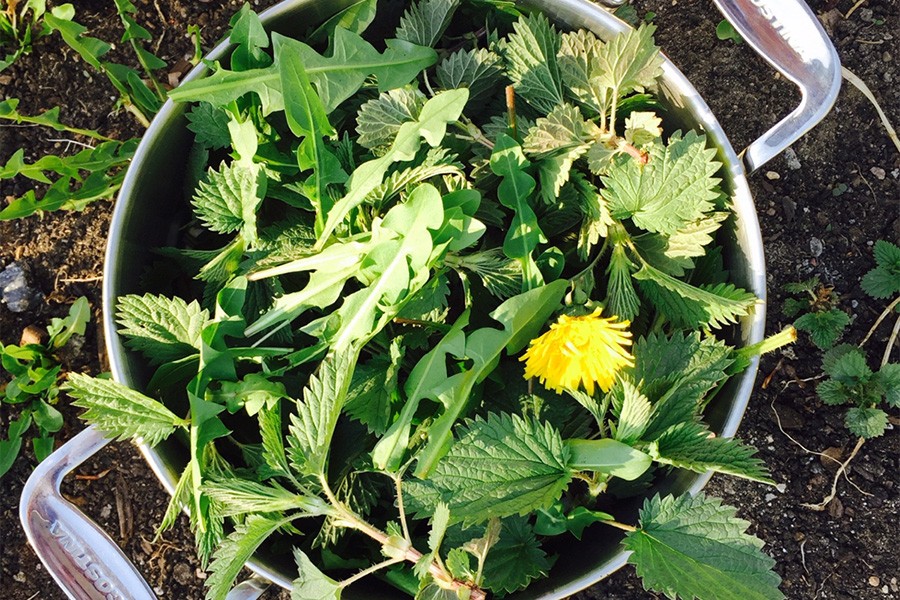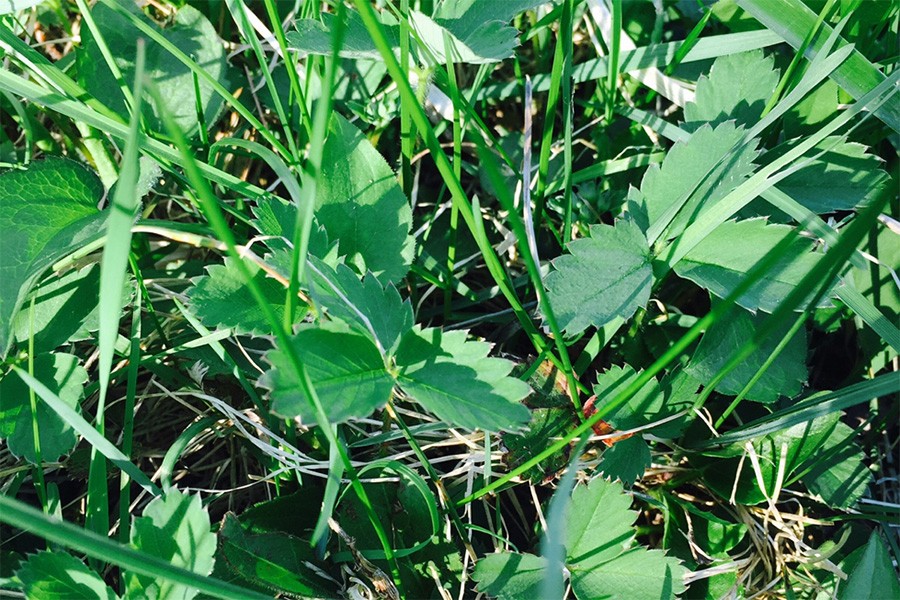Picture your ideal salad.
Crunchy lettuce, fresh cucumber, sweet red pepper? Juicy tomato slices and delicate basil leaves?
I’m willing to bet you didn’t include lamb’s quarters, purslane, creeping Charlie, or cleavers. If those names don’t sound familiar, this term sure will: weeds. The bane of vegetable gardeners and grass growers alike, “weeds” are all around us. We don’t know much about them, we generally can’t tell them apart, but this we do know: we don’t want them around. They’re pulled out, burnt, or doused in herbicides before they can take over our carefully curated environment.
As I checked on my yet unplanted vegetable garden this morning, I wondered: what makes a weed a weed? Why do we decide that some plants are fit for the plate while others head straight to the compost pile? Can we rethink and expand some of the strict rules we create to define edibility?
Rethinking the garden – and our plates
Over the course of the coming year, my blog posts as a Concordia Public Scholar will investigate and challenge our ideas about edibility. I will propose different avenues for thinking about the foods we eat and the ones we don’t, questioning our choices and suggesting ways to expand our repertoire. My PhD research focuses on the acceptance of novel foods, with a specific interest in edible insects. I look at how they’re perceived, how foods containing them are promoted, and how acceptance evolves over time.
Because they elicit such powerful reactions in most people – that’s the “yuck factor” – bugs are a great avenue for shedding light on how our acceptance of novel foods can evolve. During the coming year, I’ll dig into some of the parameters that condition and shape our acceptance of new foods. I’ll tackle bugs as a potential source of nutrients, but also other foods that present particular challenges to the average consumer. To kick off this investigation on a seasonal note, I looked out into the garden patch and decided to undertake some weeding.
Matter out of place
In Purity and Danger: An Analysis of Concepts of Pollution and Taboo, Mary Douglas, an influential anthropologist of the second half of the 20th century, examined our relationship to purity and contamination. She famously stated that “Dirt is matter out of place”.
As a structuralist, Douglas tried to uncover the hidden patterns and repetitions that structured humans’ lives and provided meaning within a certain culture.For instance, she studied the rigid ways in which the English middle class organized their mealtimes, revealing a supposedly similar structure over the course of a year, a week, a day, and a single meal. Any deviation from this pattern was bound to raise eyebrows and become meaningful by virtue of its differentiation.
Structuralist frameworks in general have been vastly (and rightfully) criticized, including for their blanket beliefs in generalizable and often simplistic systems of organization. But her statement about dirt gives me pause. It supposes that what we call ‘dirt’ does not possess an intrinsic essence of dirtiness, something fundamental about it that would make it undesirable. It is a matter, like any other matter. But it is, crucially, out of place.
Mud on the living room carpet, dust under the bed, leftovers in a dirty plate – all of these matters are, in certain places, tolerable. But when they stray from the organized scheme we have agreed on, they become unacceptable. It is that departure from the structure that makes them stand out, not their particular nature.



 Wild strawberries (Fragaria vesca) poking through the lawn
Wild strawberries (Fragaria vesca) poking through the lawn

